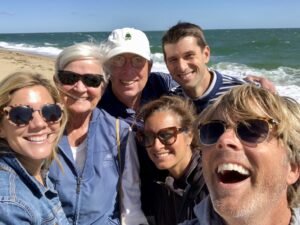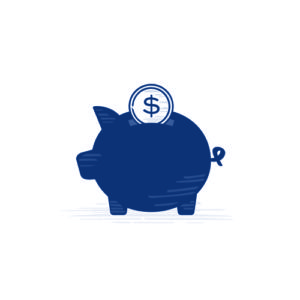Details Are Part of Our Difference
Embracing the Evidence at Anheuser-Busch – Mid 1980s
529 Best Practices
David Booth on How to Choose an Advisor
The One Minute Audio Clip You Need to Hear
January Newsletter Intro
 I had something else planned for my introduction to this month’s newsletter, but that will have to wait until February for reasons you’ll soon understand.
I had something else planned for my introduction to this month’s newsletter, but that will have to wait until February for reasons you’ll soon understand.
As I’ve mentioned before, this newsletter is read by more than just our clients. We have 2,000 subscribers and a monthly open rate of 65 to 70 percent. This means every month, 1,400 people are taking a peek at what we share. But there weren’t 2,000 people in the beginning, or even 200. As some may have read in Odds On, we started Hill Investment Group with 0 clients. Rick and I made an agreement with our former firm that allowed us to talk with a small number of relationships, many of whom decided to join us.
One of those “founding” clients passed away recently, and I want to tell you about him. His name was George.
George was a husband, a dad, a grandfather, a friend to many, a diehard North Carolina Tarheel basketball fan, an avid golfer, a former lawyer for the king of beers, a lover of his dog Maggie Mae, and someone who made a profound impact on Hill Investment Group. He also affected me, creating images and memories in my mind that will stay with me for the rest of my life.
Like most of us, George started as a very different investor. He was an old-school active investor, buying stocks and trading options and spending too much time and energy trying to outperform the market. All he got in return was too much stress and unsatisfying results.
It took three meetings over six months to convince him to convert to an evidence-based approach. It didn’t hurt that his former employer, Anheuser-Busch, had switched to index funds in the mid-80s, so elements of that story helped push George a little closer to accepting our data-driven approach. Once he made the change, he never looked back and became a raving fan.
When you had George on your side, he was an unstoppable force–the type to put his arm around you and emphatically introduce us by saying, “These are my guys. You should talk with them.” He suggested his family members work with us, neighbors, friends, golf partners, colleagues, and so on. Because he had both relationships and influence, people listened to him.
George approached everything he loved with that same enthusiasm. We once gave him a basketball signed by the coach of his favorite team. To make it perfect for him, we looked all over town for a plexiglass case to display the ball, then wrapped it and presented it as a special gift for all of his support. George tore open the paper, ripped the plexiglass apart, threw it all away, and carried the naked ball home. We tried to stop him and gather the plexiglass display case, but he didn’t want or need it. He blasted right through it and was on to his next adventure.
That was George’s typical speed. Once, he hollered at a golf marshal that play was too slow. The marshal calmly reminded George that he had just returned to St. Louis from Florida and may have forgotten to adjust his watch. The front nine had only taken two hours (right on time), not three. George laughed, saying, “Well, it felt long playing with these guys!”
Becoming a Hill Investment Group client gave George both peace of mind about his portfolio and more time to pursue the things he loved. He took trips worldwide, had a custom wooden boat crafted and named for his beloved wife, Joanie, and built a house on Martha’s Vineyard. Once the house was completed, he hosted a dinner to thank Hill Investment Group for helping make their dream home a reality. George’s generous toast at the dinner is still one of the highlights of my career.
George embodied everything we hope for our clients and validated why we started this firm: to improve our clients’ lives. George said it best when he uttered a famous line in Hill Investment Group lore: “The only thing I fear now is a downhill, sidehill three-foot putt. My worries are different thanks to you all.”
In 2019, John Reagan and I took our spouses to visit George and Joan on Martha’s Vineyard (see photo). George created an itinerary that wore us out (and I’m 30 years younger). I slept like a baby on that trip. George did, too, on the final night. He took us to a private club—one he didn’t even belong to (except through an old reciprocal that had long expired)—for a splendid dinner where we were treated like royalty. Afterward, we drank, told stories, laughed, and finally, he fell asleep in his chair with his dog at his side as I tried to keep my eyes open through the remainder of the documentary he had selected.
George lived a rich life. He made things happen. He used his influence for good. He created memories. He helped our firm. He took the long view and was proud of it.
I’m lucky to have known him.
Waiting Patiently in 2023

Clients and long-time followers already know one year of performance is really a nano-second of investing time. However, it’s instructive to look back on 2023 to see what happened in that snapshot of time. The US stock market was up 26.1%1 for the year. Not bad. If you invested $1,000,000 in the US market on January 1st, 2023, fell asleep, and woke up on January 1st, 2024, your account would have a value of $1,261,000. This would have been quite a pleasant surprise to wake up to. However, if you checked your account every month, your experience (mental and financial) was very different. Your portfolio would have lost value in February, August, September, and October. One-third of the months, you would have been frustrated with the returns. From August through October, your portfolio would been down 9.1%! Seeing $1,000,000 fall to $909,000 in a short three-month period may have freaked you out. In October, we got a few calls from newer clients worried about the market and wondering if we should take action.
Then November and December happened. The market ended up returning 15.2% over those two months. 58% of the gain for the year occurred in November and December. If you had sold after the 9.1% market decline, you would have missed over half the entire market premium for the year. Bouncing in and out of the market is a loser’s game. Let me repeat: bouncing in and out of the market is a loser’s game. Staying committed to the long view is a winning strategy over time.
The market behaves unpredictably every year, but two things remain true. First, markets are volatile and can go up and down very quickly. Second, investors are compensated with higher returns by staying invested in the market and observing the risk of volatile equity markets.
Keep in mind that even a one-year time frame is a short period. Equity markets can underperform short-term government bonds for over a decade. Taking the long view means not just staying invested for months or even years, but throughout an investment lifetime.
This information is educational and does not intend to make an offer for the sale of any specific securities, investments, or strategies. Investments involve risk and, past performance is not indicative of future performance. Return will be reduced by advisory fees and any other expenses incurred in the management of a client’s account. Consult with a qualified financial adviser before implementing any investment strategy
Picking Up Pennies – Volume 4

Welcome to the fourth installment of picking up pennies. Last month, we discussed what an Exchange Traded Fund (ETF) is and how its structure can help investors defer capital gains, defer taxes, and keep money invested in the market rather than giving it to Uncle Sam. This month, we’ll discuss how to save on trading costs when buying and selling ETFs.
- Volume 1 – Keep Cash Balances Low (Better Chance for Higher Returns)
- Volume 2 – Asset Location (Reduces Taxes)
- Volume 3 – Using ETFs (Reduces Taxes)
- Volume 4 – Trading ETFs in Competition (Reduces Trading Costs)
- Volume 5 – Number of Funds and Not Auto-Reinvesting Dividends (Reduces Trading Costs)
- Volume 6 – Tax Lots and Tax Loss Harvesting (Reduces Taxes)
- Volume 7 – Summary (Total Impact)
How do ETFs Trade?
ETFs are like stocks in that they are traded throughout the day while the market is open. To buy or sell a share of an ETF, you need to find another investor to trade with. Let’s say it is 1:00 pm, and you want to sell a share of ETF ABC. At that exact time, there may not be anyone willing to buy a share of ABC. Maybe in a few hours, or tomorrow there might be, but you want to sell the share today. This is where market makers come in who will buy your share of ABC and hold it on their books until someone else wants to buy it from them. The market maker is taking a risk by holding on to ABC. What if the price goes down between the time they buy it from you and sell it to someone else?
Because these market makers need to be compensated for the risk they are taking and the service they are providing, they are compensated via a bid-ask spread. A bid-ask spread is the difference between the highest price a buyer is willing to pay for an asset and the lowest price a seller is willing to accept. If an ETF is worth $10, these market makers might be willing to buy ABC for $9.99 and sell it for $10.01. In other words, buy it from you now for $9.99 and sell it a few hours later for $10.01. Market makers pocket the 2 cents between the two prices, i.e., they earn 2 cents on “the spread.”. The cost to you is the 1 cent/share less you received for selling the ETF for less than it was worth, but you had the benefit of selling it immediately. Importantly, this cost is not listed anywhere on your statements. It is simply built into the price you bought or sold the ETF for.
The risk to the market maker goes up the more shares you are trying to trade. Thus, market makers might be willing to buy 100 shares at $9.99, but the next 100 shares will be at $9.98, the next hundred at $9.97, etc. The trading cost to you keeps getting steeper and steeper the more shares you want to trade. These trades can get costly if you are not paying attention and are trading blindly. Is there a better way?
Putting ETFs in Competition
If HIG wanted to trade 1,000 shares of ABC and sent a typical order to sell 1,000 shares to the market, we would end up paying a steep cost. We might be able to get a few hundred shares traded at $9.99, but the next few hundred might be sold at $9.98 or less. This means it could cost our clients over $10 in hidden trade costs (at least 1 cent per share X 1,000 shares). How can an investor minimize these costs?
Investors can minimize these costs by putting their trades in competition rather than sending them blindly to the market. We don’t go to the market and just take the quotes that market makers have posted and incur these costs. Whenever we can, we put all the market makers in competition with each other and make them compete for our business on your behalf. We call up all the market makers and tell them we want to trade 1,000 shares of ABC. We don’t tell them if we are buying or selling and ask them to quote us their best price. By putting these market makers in competition, we squeeze their margins and improve the price our clients can receive on their trades.
Let’s take an example. On October 25th, we wanted to sell 14,000 shares of AVIG in a client account. At the time of the trade, the bid-ask spread was 200 shares deep at $38.67 x $38.72. That means we could have sold 200 shares for $38.67 or bought 200 shares for $38.72. Given that we wanted to sell 14,000 shares, not 200, we probably would have sold the shares for an average price much lower than $38.67. Rather than just sending the trade to the market, we put the market makers in competition and got quoted $38.69 for all 14,000 shares. That is two cents per share better than the quoted bid-ask spread! That means we saved at least $280 on this trade for this client.
Saving 1-2 cents per share you trade doesn’t sound all that meaningful. But as soon as you realize we are trading millions of shares, costs escalate quickly. We care about these costs, even if they don’t appear on a statement. Our clients only see that we sold AVIG for $38.69/share rather than $38.67/share. Clients don’t know we saved them $280 in hidden trading costs on this trade. As background, it’s estimated that less than 20% of financial advisors take the time to put their clients’ ETF trades in competition to reduce these hidden costs. In 2023, we traded ~$9 million shares of ETFs in our client accounts. Assuming we saved ~$0.02/share on average by trading via competition, that is $180,000 in savings. Now you know!

